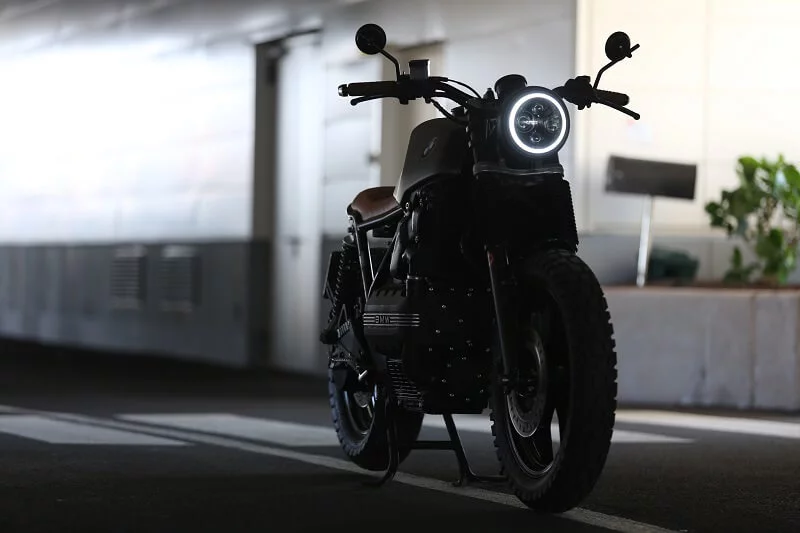Hello there, in this article, we will discuss the the distinction between vintage and modern motorcycles. So keep reading.
There’s a certain charm to motorcycles that ignites a passion within riders and enthusiasts alike. That charm intensifies when we categorize these marvels of mechanical engineering into vintage and modern motorcycles. This distinction is rooted in the realm of motorcycle parts, motorcycle roller wheels, motorcycle accessories, and their features. Let’s dig deeper into the specifics that set vintage motorcycles apart from their modern counterparts and vice versa.
The Distinction Between Vintage and Modern Motorcycles:
Vintage Motorcycles
A motorcycle typically earns the “vintage” designation if it was produced between 30 and 50 years ago. Vintage motorcycles are recognized by the styling, character, and technology of the era in which they were made. They resonate with a nostalgic allure, a testament to the history and evolution of motorcycle design.
One of the most notable differences between vintage and modern motorcycles lies in their parts. Vintage motorcycle parts, often made of steel, chrome, or other metals, are heavier and more solid than the materials used today. Mechanical systems are less refined and rely more on the user’s physical input. For example, early braking systems used drum brakes, which while reliable, required more force and were less efficient compared to modern disc brakes.
Motorcycle roller wheels on vintage models are generally made of spoke steel, with chrome and stainless steel being popular for their shiny, classic look. These wheels might not provide the same level of rigidity or balance as modern alloys, but they certainly add to the old-world charm of vintage bikes.
Vintage motorcycle accessories tend to be minimalistic, less about comfort, and more about functionality and style. For instance, a single round headlamp, a simple speedometer, basic side mirrors, and leather saddlebags may be the typical features on a vintage motorcycle.
Modern Motorcycles
Modern motorcycles, on the other hand, are known for their advanced engineering, innovative designs, and use of high-tech materials. They showcase cutting-edge technology and offer more efficiency, safety, and performance features compared to their vintage counterparts.
Modern motorcycle parts are generally lighter, using materials like aluminum, plastic, and composite materials. These parts are often designed to be aerodynamic, reducing wind resistance and improving fuel efficiency. Also, modern motorcycles feature advanced electronic systems such as electronic ignition, fuel injection, and anti-lock braking systems (ABS) that contribute to a safer, smoother ride.
The motorcycle roller wheels on modern bikes are typically made from cast or forged alloys. These wheels offer superior rigidity, reducing flex, and providing better handling and performance. They may also feature tubeless tires, which are safer and easier to manage in case of punctures.
When it comes to motorcycle accessories, modern bikes tend to focus on comfort and convenience. You’ll find advanced features like LED lighting, GPS navigation systems, heated grips, adjustable windshields, and even Bluetooth connectivity for an enhanced riding experience.
Here are five notable vintage motorcycles with their brand and model names:
- Harley-Davidson FL Hydra-Glide– A vintage motorcycle icon, the FL Hydra-Glide introduced in 1949 was the first Harley-Davidson model to feature a hydraulic fork.
- Triumph Bonneville T120 – Launched in 1959, the Bonneville T120 was known for its power and style, becoming a beloved model in the Triumph lineup.
- Honda CB750 Four – Introduced in 1969, the CB750 Four was groundbreaking, featuring a four-cylinder engine, disc brakes, and electric start.
- BMW R69S – Produced between 1960 and 1969, the R69S was BMW’s top-of-the-range sports motorcycle, renowned for its solid build and smooth ride.
- Indian Chief – Manufactured from 1922 to 1953, the Indian Chief with its unique look and powerful engine is one of the most iconic models from Indian Motorcycle.
Why Vintage Motorcycles are not available anymore
Vintage motorcycles aren’t readily available for a variety of reasons:
- Limited Production: Many vintage motorcycles were produced in limited numbers. The scarcity of these motorcycles increases with time as more of them get destroyed, lost, or deteriorate beyond repair.
- Preservation: Over time, some vintage motorcycles have become collectors’ items. Owners often keep these motorcycles in private collections or museums, meaning fewer are available on the open market.
- Regulations: Modern regulations related to emissions and safety standards are much stricter than those in the past. Most vintage motorcycles do not meet these standards, which can limit their use or sale.
- Deterioration and Maintenance: Vintage motorcycles are old by definition. As such, they may require extensive maintenance, restorations, or repairs to keep them running. Over time, it can become increasingly difficult to source parts for these bikes, making them harder to maintain.
- Transition to Modern Technologies: Motorcycle manufacturers today focus on developing and selling bikes that incorporate modern technology and meet the demands of today’s riders. This includes things like improved fuel efficiency, better handling, advanced safety features, and digital displays.
However, despite their scarcity, vintage motorcycles can still be found through dedicated dealers, auctions, or private sellers. Many enthusiasts enjoy the process of restoring and maintaining these machines, preserving a piece of motorcycling history.
In conclusion
The distinction between vintage and modern motorcycles transcends the gap of years. Each motorcycle era has its unique charm and appeal. Vintage motorcycles offer a ride back in time, revealing the roots of motorcycling history, and engaging the rider with a more raw and mechanical experience. Modern motorcycles, however, highlight the advancements in technology and design, promising more comfort, better performance, and heightened safety.
Whether you’re drawn to the historic allure of a vintage bike or the sleek sophistication of a modern machine, there’s no denying that each ride provides a unique experience, all brought about by the diversity in motorcycle parts, roller wheels, accessories, and features.









